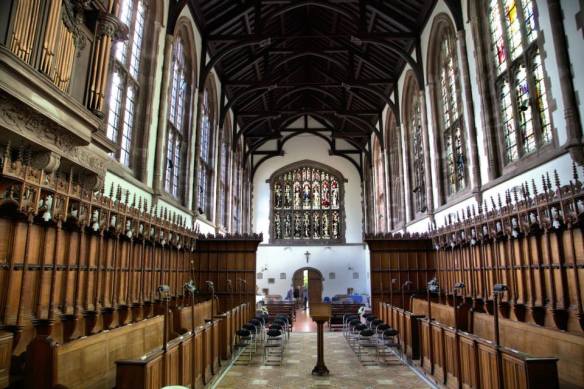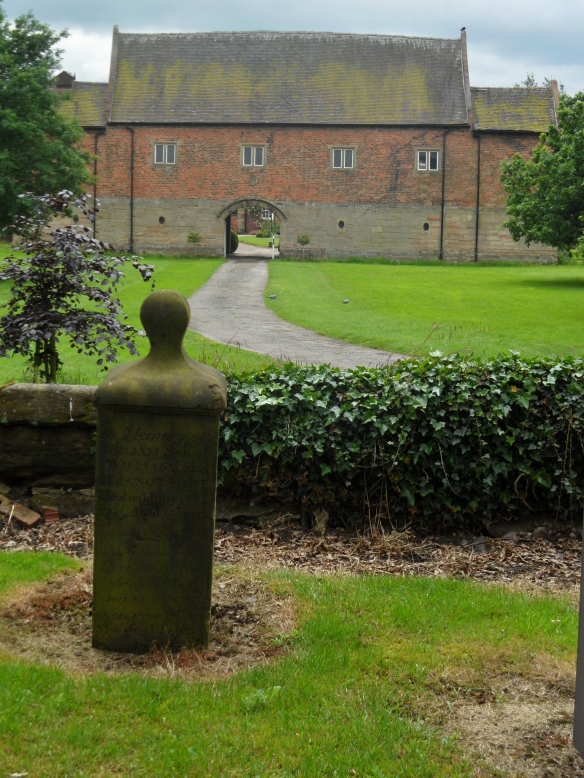Yesterday, I visited Hawkesyard, a place known to previous generations by a variety of names including Le Hawkeserd in Hondesacre, Armitage Park, Spode House and Hawkesyard Priory. The first house known to have existed here was a moated manor owned by the Rugeley Family, who appear to have had a variety of spellings for their own name. According to an article in the Lichfield Mercury on February 3rd 1950, a document describing the funeral of Richard Rugeley, who, ‘…departed this mortal and transitory life on Saturday night, the 5th July 1623 at his house at Hawkesyard’, was signed by Symn Ruggeley, Thirkell Rugeley, Henry Rugley and Thomas Rugsley.
Information on the early days of Hawkesyard is sketchy but it’s thought the original hall, pulled down in 1665, was much closer to the River Trent, about half a mile to the west of Armitage Church. Nothing is thought to remain and nothing much more is known about Hawkesyard until 1760, when the estate was renamed ‘Armitage Park’ by Nathaniel Lister, who built a gothic style mansion on the sandstone hill above the site of the original hall. Beneath Lister’s new house was a plaque recording that, ‘These cellars were cut out of the rock by Richard Benton and Sons, anno Domini 1760, for Nathaniel Lister, Esq.’ Perhaps it’s still there?
From the 1840s, Hawkesyard was home to Mary Spode and her son Josiah, the fourth generation of the Stoke on Trent pottery dynasty, and the first not to work in the family business. Mary died in 1860, and Josiah’s wife Helen died eight years later. Both are buried at St John the Baptist in Armitage, the Anglican parish church where Josiah was the organ player and warden. Despite these strong links to St John’s, Josiah Spode converted to Catholicism in 1885, along with his niece Helen Gulson, who lived with him at Hawkesyard. On his death in 1893, Spode requested that Helen should continue to live at Hawkesyard until her death, after which the estate should be passed to the English Dominican Order of Friars. However, Helen decided to move out of the hall and into a cottage on the estate, allowing work on the new Priory and Church to begin almost immediately. Some say that this decision was inspired by a vision of the Virgin Mary appearing to Helen in the grounds of the estate, and that the altar of the new Priory Church of St Thomas Aquinas was supposedly erected over the site of this apparition.
The Dominicans left Hawkesyard in 1988, but their benefactors and some of their brethren remain. Josiah Spode and Helen Gulson are interred in a small chapel within the Priory Church, and outside in the gardens, are the simple concrete crosses marking the graves of monks.
As beautiful as the church is, it’s the gardens at Hawkesyard with their subterranean features, which have captured my imagination. They appear to have had the same effect on this reporter from the Lichfield Mercury, who visited in the Summer of 1935, and wrote the following description:
Down weather-worn and feet-worn steps, through charming little rockery glades, rich with lichens, ferns and its more wild brother – bracken- time and nature has made this wonderful spot more beautiful in its wildness. Some pathways lead down through fine old arches, gloriously hewn or erected deep into the bowels of the earth, or so it appeared; while others lead gradually upwards through narrow passages. Opening into a small glade we suddenly came across the entrance to the well-known underground passage which, descending steeply, rises just as abruptly in another part of the rockery, far remote from each other. Today this passage is awesome in appearance, the ground underfoot being feet deep with decaying leaves, and only the most venturesome pass out of the light of day into its unknown blackness. It was a curious and certainly thrilling experience to traverse this maze of paths. Another similar grotto housed a large shelter, carved in stone and the actual rock; a sort of summerhouse with a double archway entrance. In another we discovered some beautiful carving in white stone of three saintly figures, obviously beautifully carved, but decaying and rotting with age. We could not discover their identity or purpose, although they surmounted what could easily have been a small natural altar, secluded in the quiet of this wonderful grotto.
Eighty years later, there are no saints to be found in this wild part of Hawkesyard. Time and nature have now ravaged its beauty but have not diminished its curiosity. Several theories exist as to who carved these grottos and tunnels out of the rock and why, but as an investigation into the overgrown site in the mid 1990s concluded, ‘the function of all the above is not clear’. Any ideas?
Sources
Photos by Jason Kirkham
http://www.hawkesyardestate.com
Hawkesyard, Armitage, Staffordshire: A Documentary and Field Assessment. Chris Welch
Staffordshire Parks and Gardens Register Review (1993-96). Parts I and II. Staffordshire County Council
http://www.armitagewithhandsacre.co.uk
http://www.staffordshiregardensandparks.org/images/Newsletter/Issue40
Lichfield Mercury Archive












